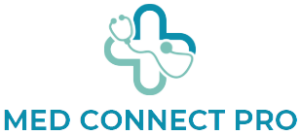In the fast-evolving world of digital design, Framer has emerged as a groundbreaking tool that bridges the gap between design and development. Built with a focus on creating interactive, high-fidelity prototypes, framer empowers designers to go beyond static visuals and bring their ideas to life with motion, responsiveness, and logic. This powerful prototyping tool is becoming an essential asset for modern design teams looking to build dynamic user experiences quickly and effectively.
Framer started as a JavaScript-based prototyping tool, primarily targeting developers who needed more control over animations and behaviors. Over time, it evolved into a user-friendly platform with a visual interface, making it accessible to designers of all technical skill levels. With Framer, the complexity of hand-coding animations or transitions is replaced with an intuitive drag-and-drop system, while still retaining the flexibility to dive into code when needed. This dual approach makes Framer a versatile solution for individuals and teams alike.
One of the standout features of Framer is its real-time interactivity. Unlike traditional static wireframes, Framer allows designers to simulate real user flows, transitions, and interactions that feel indistinguishable from a fully developed app. This level of fidelity helps stakeholders and clients understand the user journey without needing to wait for engineering. Framer’s interactive design approach ensures that feedback is grounded in actual experience, not just visual impressions.
Framer is also known for its seamless collaboration features. Teams can co-design in real time, leave contextual comments, and share interactive prototypes with a single link. These collaborative elements make Framer a strong contender in environments that rely on agile workflows and rapid iteration. The ease of sharing and collecting feedback directly on the prototype ensures faster decision-making and reduces misunderstandings between designers, developers, and stakeholders.
Another key benefit of Framer is its integration capabilities. Whether it’s syncing with design tools like Figma or importing assets from Sketch, Framer fits easily into existing workflows. Additionally, Framer’s support for code components means that developers can contribute real React components, allowing for a deeper level of customization and realism. This ability to mix design and code sets Framer apart from many of its competitors in the prototyping space.
For product designers, Framer offers a way to validate ideas quickly and efficiently. Since Framer supports logic and condition-based interactions, designers can simulate real-world scenarios like form validation, user inputs, and multi-step flows without writing extensive code. This rapid prototyping capability enables user testing at an earlier stage, reducing the risk of misaligned development down the line. With Framer, design validation becomes a fast, iterative process.
Framer also caters to motion designers who want to bring their animations to life. With features like Smart Animate and advanced timeline control, Framer enables precise control over motion transitions and gestures. These animations aren’t just visual flair—they can significantly improve user experience by guiding attention, confirming interactions, and enhancing usability. Framer makes motion design not only achievable but intuitive for non-developers.
Accessibility is another area where Framer is making strides. With a growing emphasis on inclusive design, Framer supports accessibility features like keyboard navigation, focus management, and screen reader compatibility. Designing accessible prototypes in Framer ensures that accessibility considerations are baked in from the earliest stages of a project, rather than being tacked on as an afterthought.
In education and UX bootcamps, Framer is increasingly used as a teaching tool because it introduces students to real-world design processes. By combining visual design, interactivity, and code within a single platform, Framer offers a holistic view of product design. Students learn to think beyond aesthetics and focus on user-centered design that performs in the real world. Framer’s educational potential helps prepare the next generation of UX professionals with practical, market-ready skills.
Looking ahead, the future of Framer is promising. As more companies prioritize design-led development and user experience, tools like Framer will continue to play a central role in how products are conceived and built. With ongoing updates and a thriving community, Framer is well-positioned to lead the next wave of design innovation. Its commitment to combining creativity with functionality makes it a vital tool for forward-thinking design teams.
In conclusion, Framer is more than just a prototyping tool—it’s a comprehensive design environment that encourages creativity, efficiency, and collaboration. Its unique blend of visual design, interactive functionality, and code-level customization sets it apart from traditional design tools. For teams striving to build products that are both beautiful and usable, Framer provides the perfect balance between imagination and execution. As digital experiences become more complex and user expectations rise, Framer will remain at the forefront of design evolution.
